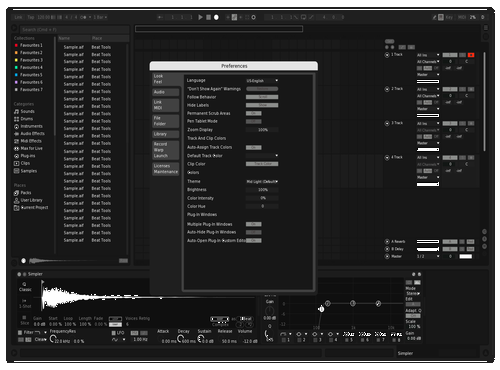
OSX DARK MODE SWITCH MAC
The solution was to ask for NSApp.effectiveAppearance in the main thread, or at least after the current callback method has returned to the system. Use the below steps if you’ve updated your Mac to macOS Ventura or later. by adding a vendor prefix).įor me neither of these answers worked, if I wanted a global state, not per view, and I didn't have access to the view, and I wanted to be notified for updates. You could also create a category on NSAppearance and add a - (BOOL)isDark method to get (better chose a name that is unlikely to be used by Apple in the future, e.g. You would use it like appearanceIsDark(someView.effectiveAppearance) since the appearance of a specific view may be different than that of another view if you explicitly set someView.appearance. Enable dark mode on a Mac Open System preferences on a Mac with macOS Mojave or newer Navigate to ‘General’ Then click on the dark theme under ‘View’ Once you have chosen this view you will. Dark mode, dark theme, black mode, night mode they all refer to and mean the same thing: a mostly-dark interface rather than a mostly-light interface. Steps to enable Dark Mode on macOS Ventura: Open System Settings.

The solution I came up with looks like this: BOOL appearanceIsDark(NSAppearance * appearance) Dark mode is defined as a color scheme that uses light-colored text and other UI elements on a dark-colored background.
OSX DARK MODE SWITCH CODE
If you experience issues, I would suggest increasing/introducing delays between keystrokes like the delay 0.4 in the code above.Since the actual appearance object you usually get via effectiveAppearance is a composite appearance, asking for its name directly probably isn't a reliable solution.Īsking for the currentAppearance usually isn't a good idea, either, as a view may be explicitly set to light mode or you want to know whether a view is light or dark outside of a drawRect: where you might get incorrect results after a mode switch.

I actually use it as a part of a larger script but the code above should work fine for P圜harm only (or any other JetBrains IDE, just replace application name). Setting up a keyboard shortcut to toggle dark and light mode in macOS To get started, pull up the Automator app within macOS. # Switch to light theme if macOS dark mode is off If defaults read -g AppleInterfaceStyle 2>/dev/null | grep -q "Dark" then

(Set Appearance action by Shortcuts can also set dark mode, but the appearance status cannot be detected. During testing I immediately noticed that every time I switch between dark and light design, I have to navigate to the settings with a lot of effort. For example, you can config your dark mode switch. Early on I installed the beta version of macOS Mojave on my MacBook, because I was looking forward to the dark mode. # 2>/dev/null to suppress error if macOS dark mode is off OnlySwitch offers some Shortcuts actions since Version 1.8. 4: Uncheck the settings for use dark mode background for messages. Below Option is only visible if Dark Mode is Enabled on Mac. # Switch to dark theme if macOS dark mode is on Go to the top menu, and Go to the Safari > preference for mail. VSCode Auto-Dark-Mode Extension - Sync VSCode to automatically switch color themes when OS changes. iTerm2 Color Themes - A large collection of iTerm2 color themes to pick from. Use the below steps if you’ve updated your Mac to macOS Ventura or later.

An example for P圜harm would be something like: #!/bin/bash iTerm2 Auto Switch Theme Script - Automatically switch themes when OSX changes from/to dark-mode - a few more details (and the original script) in the comments here. Click back to return to System Preferences. There have been a bunch of attempts at getting vim/nvim to switch themes automatically since macOS 10.14 came out with dark mode. I have come up with a (hacky) way to change themes in JetBrains editors using bash and AppleScript. When I use the keyboard shortcut, Command + Tab to invoke the App Switcher, the switcher highlights the currently selected app using a black frame. Click the Apple logo in the Menu bar then click System Preferences.


 0 kommentar(er)
0 kommentar(er)
